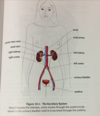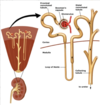Bio: Ch 3, 10 Flashcards
(205 cards)
fertilization
joining of a sperm and an ovum
ampulla
widest part of the fallopian tube
where does fertilization usually occur
occurs in the ampulla of hte fallopian tube
how does fertilization happen?
- sperm uses acrosomal enzymes to penetrate the corona radiata and zona pellucida
- once it contacts the oocyte’s plasma membrane, the sperm establishes the acrosomal apparatus and injects is pronucleus

cortical reaction
occurs after penetration of sperm through cell membrane
- sperm causes release of calcium ions –> prevents additional sperm from fertilizing the egg
- increases the metabolic rate of the resulting diploid zygote
fertilization membrane
depolarized and impenetrable membrane after cortical reaction
fraternal (dizygotic) twins result from
fertilization of two eggs by two different sperm
identical (monozygotic) twins result from
splitting of a zygote in two
monozygotic twins vs dizygotic twins
placenta
monozygotic: one placenta
dizygotic: two separate
cleavage
early divisions of cells in the mebryo
result in a larger number of smaller cells, as the overall volume does not change
zygote becomes an embryo after…
first cleavage because it is no longer unicellular
indeterminate cleavage
results in cells that are capable of becoming any cell in the organism
determinate cleavage
results in cells that are committed to differentiating into a specific cell type
morula
solid mass of cells seen in early development
blastulation
morula is formed into a blastula
blastula (blastocyst)
hollow ball of cells
blastocoel - fluid filled center
two different structures: trophoblast and inner cell mass

blastocoel
fluid filled center of blastula

trophoblast
part of blastula that surround the blastocoel
give rise to the chorion and later the placenta
inner cell mass
part of blastula
becomes the developing organism
what does the blastula do?
implants in the endometrial lining and forms the placenta
chorion
extraembryonic membrane that develops into the placenta
contains chorionic villi
chorionic villi
part of chorion
penetrate the endometrium and create the interface between maternal and fetal blood
before the placenta is established, the embryo is supported by…
the yolk sac
allantois
involved in early fluid exchange between embryo and yolk sac
















